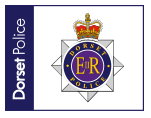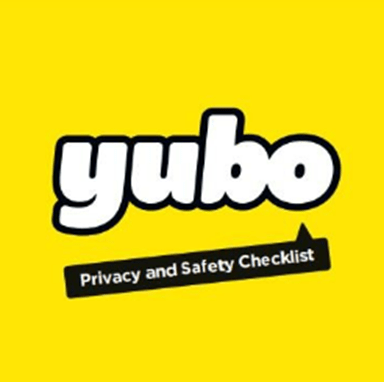Online Safety
|
Intent E-safety is an integral part of children’s education in today’s digital world therefore learning about staying safe online is very important. At Wimborne First School, as part of your child’s curriculum and development of computing skills, we provide access to the Internet in lessons supervised by teachers. We strongly believe that the use of the web is hugely worthwhile and an essential tool for children as they grow up in the modern world. However, due to the frequent concerns about children having access to undesirable material, we have taken positive steps to educate our pupils to be aware of the potential online risk and to take steps to understand what they should do to stay safe. We have an acceptable use agreement, which is signed by the children in the school with their parent/guardian. The children are expected to follow these rules at home and in school to make sure they are always staying safe online. These rules can be viewed below and should be followed when using all kinds of technology such as mobile phones, game consoles, tablets and home computers. Alongside asking children to complete an acceptable use policy we also require staff and visitors of Wimborne First School to comply and follow a set of rules and expectations through an acceptable use agreement. |
 |
|||
Implementation
To further reinforce Internet safety and prevent misuse, our Internet access provider operates a filtering system that restricts access to inappropriate materials, which is regularly checked and updated.
At the beginning of each year, the children take discrete E-safety lessons in which they will learn about the potential dangers and steps to follow in order to stay safe online. We use a range of stories and activities to engage the children in this part of their learning and all the children have a secure understanding of E-safety by the end. In addition to discrete lessons, children are constantly asked to refer back to their understanding of E-safety when using technology on a daily basis therefore all our children are confident to follow the safer Internet rules. At the beginning of each half term, the children will take part in an extra Internet safety lesson to reinforce their skills and understanding.
Key Threads:
Our Online Safety curriculum is interwoven within the PSHE curriculum with the concepts ‘Living in the Wider World’ and ‘Online Safety’, we use the project evolve resources to support and the key strands are used from the 'Education for a connected World' which are taught throughout the year and across each year group. They are regularly revisited and reviewed throughout the curriculum and explicitly taught in our Computing and Online Safety sessions.
| Name | |
|---|---|
| UKCIS_Education_for_a_Connected_World_.pdf | Download |
The key threads are:
|
Self-image and identity |
This strand explores the differences between online and offline identity beginning with self-awareness, shaping online identities and media influence in propagating stereotypes. It identifies effective routes for reporting and support and explorers the impact of online technologies on self-image and behaviour. |
|
Online Relationships |
This strand explores how technology shapes communication styles and identifies strategies for positive relationships in online communities. It offers opportunities to discuss relationships, respecting, giving and denying consent and behaviours that may lead to harm and how positive online interaction can empower and amplify voice. |
|
Online reputation |
This strand explores the concept of reputation and how others may use online information to make judgements. It offers opportunities to develop strategies to manage personal digital content effectively and capitalise on technology capacity to create effective positive profiles. |
|
Online bullying |
This strand explores bullying and other online aggression and how technology impacts those issues. It offers strategies for effective reporting and intervention and considers how bullying and other aggressive behaviour relates to legislation. |
|
Managing online information |
This strand explores how online information is found, viewed and interpreted. It offers strategies for effective searching, critical evaluation of data, the recognition of risks and the management of online threats and challenges. It explores how online threats can pose risks to our physical safety and well as online safety. It also covers learning relevant to ethical publishing. |
|
Health, well-being and lifestyle |
This strand explorers the impact that technology has on health, well-being and lifestyle e.g. mood, sleep, body health and relationships. It also includes understanding negative behaviours and issues amplifies and sustained by online technologies and the strategies for dealing with them. |
|
Privacy and security |
This strand explores how personal online information can be used, stored, processed and shared. It offers both behaviour and technical strategies to limit impact on privacy and protect data and systems against compromise. |
|
Copyright and ownership |
This strand explores the concept of ownership of online content. It explores strategies for protecting personal content and crediting the rights of others as well as addressing potential consequences of illegal access, download and distribution. |
In school, we use Swiggle - a child friendly search engine - click the link to use the resource at home. |
 |
||
Internet Safety Day 2024
Alongside our regular implementation of Online Safety, we celebrate National Internet Safety Day.
As part of our International Internet Safety Day on 6th February 2024, the children explored the concept 'Inspiring change? Making a difference, managing influence and navigating change online'. They all listened to an about the importance of staying safe on the internet and considered what they should do if something changes online. We learnt the following poem from the https://saferinternet.org.uk/safer-internet-day/safer-internet-day-2024 information:
Each year group then spent some time completing various activities to educate others on the importance of internet safety. They thought carefully about the rules they should follow and what to do if they get that 'worry' feeling. Let's see how each year group got on:
Year 1
In Year 1 this week, we discussed how you can go online for many reasons and that the internet can be accessed by anyone. To stay safe, we looked at who we can talk to and who we can trust online using the acronym: SMART - stay safe, never meet, do not accept, reliable and tell.
Year 2:
In Year 2, we spent the day discussing, learning and acting out scenarios involving online safety. We thought carefully about the online safety rules, the potential dangers of being online and what to do if we are worried. We also considered all the fun and amazing things that the internet can bring. We learnt about how technology has changed over the years and how it continues to change at a rapid rate, looking at the changes online that can happen day to day. We learnt what to do about these changes and what feelings these might present. We understood that those feelings of worry, and anxiety are when we need to seek additional help, by telling a trusted adult and reporting our concerns. We worked hard on each activity and even created our own internet safety stories to spread awareness to other people about internet safety.
Year 3
In Year 3, we spent the day discussing, learning and acting out scenarios involving online safety. We thought carefully about the online safety rules, the potential dangers of being online and what to do if we are worried. We also considered all the fun and amazing things that the internet can bring.
We learnt what to do when things change and what feelings these might present. We understood that those feelings of worry, and anxiety are when we need to seek additional help.
We know the things we can do to support us when feeling like this, such as stopping what we are doing, telling a trusted adult and reporting concerns. We worked hard on each activity and even created our own internet safety adverts to spread awareness to other people about internet safety.
Year 4:
On Internet Safety Day, the children discussed how to use technology safely and responsibly, how to identify unacceptable behaviour online and how to report a concern that they might have. The children then produced informational videos to spread awareness about E-safety.























